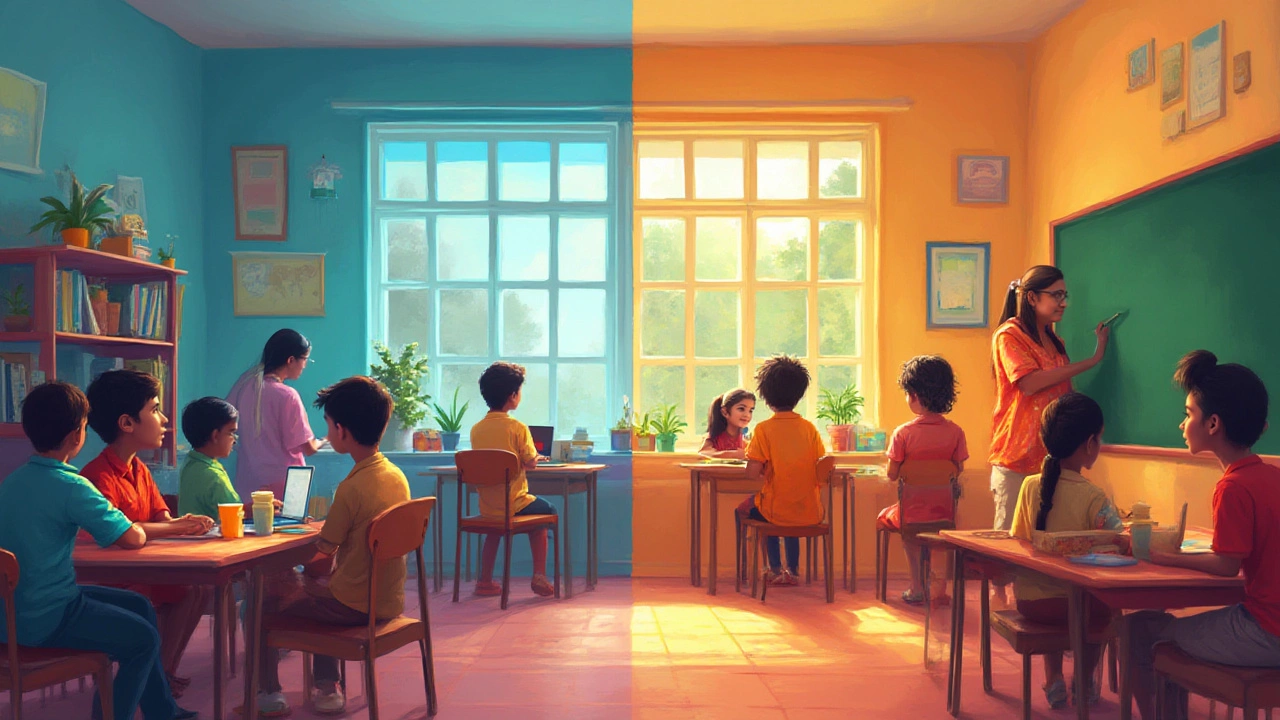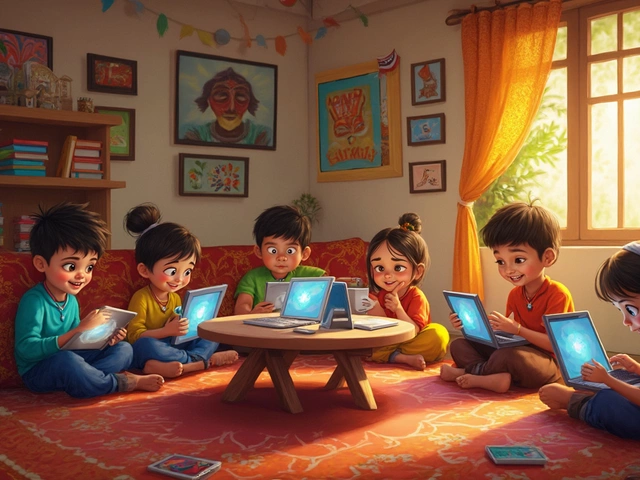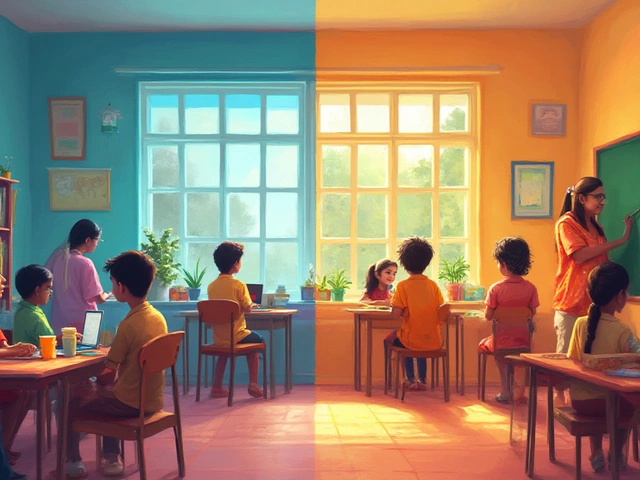Picture this: It’s 8 a.m. and you’re still in your pajamas. School or work is just a click away, not a crowded bus or a 45-minute walk dodging barking dogs—though my dog Chintu sometimes tries to pull me outside anyway. On the other hand, maybe you miss the buzz of a busy classroom where you can whisper to your friends when the teacher isn’t looking. The great education showdown right now is between distance learning and the classic classroom. I’ve seen families argue over it at the dinner table. But here’s the thing—what actually works better?
The Case for Distance Learning: Flexibility, Freedom, and Accessibility
Distance learning has taken over in a big way, especially after 2020. Before the pandemic, online education was basically a side character in most people’s stories. Now, it’s often front and center. Easy fact: According to Statista, there were over 220 million online learners worldwide in 2024. No joke, nearly half the students in India had at least one online class last year. And platforms like Coursera or BYJU’S have become as familiar as Netflix for a whole generation.
So why do people love distance learning? The first answer is simple: flexibility. You get to decide when the class fits into your schedule. Feeling sharp at 10 p.m.? Watch that math lecture now. Want to rewind that tricky Chemistry formula five times? Go ahead. Missed a class because Chintu chewed your homework? Catch up right away.
Another major draw is accessibility. If you live in a small town or a remote village, top teachers or unique courses aren’t just a city-kid thing anymore. My cousin in a tiny village near Jodhpur is now prepping for the SAT with world-class tutors she found online. According to the UNESCO 2023 report, distance learning has closed the education gap for millions who couldn’t attend regular schools—girls in conservative families, working teenagers, or those with health issues.
Money matters too. On average, online courses are 30-60% cheaper compared to private coaching or city schools, mostly because there’s no campus, less infrastructure, and reusable content. This can tip the scale for many families on a tight budget.
But, and it’s a big one, distance learning can get lonely. Sure, you’ve got videos and Whatsapp groups, but there’s something about raising your hand, being called out by name, or catching a joke in the back row that just doesn’t hit on Zoom. Some students also need the pressure of a live classroom to stay awake—trust me, it’s a skill to not drift into social media during a boring session at home. If you need instant feedback, or the spark of a real debate, distance learning often falls flat.
And here’s a practical tip—good distance learning actually needs self-discipline, decent internet (India’s internet speed ranking was 47th among 98 countries in 2024), and a quiet place to focus, which is not always available in every home.
Let’s not forget assessments. Research from Times Higher Education showed that online proctored exams catch cheating less reliably than in-person exams. So, while you can still learn, proving it might be trickier in the virtual world.
Quick reference: Here’s a breakdown of distance learning’s key facts—
| Factor | Distance Learning |
|---|---|
| Flexibility | High (on-demand) |
| Cost | 30-60% less vs classroom |
| Accessibility | Available globally |
| Social Interaction | Low, virtual only |
| Cheating Detection | Weaker vs in-person |
| Motivation Needed | Much higher |
Looking at those numbers, it’s obvious why *distance learning* is so popular for many—but the struggle is real for students who thrive on in-person energy, need extra help, or don’t have a quiet room to study.

The Case for Classroom Learning: Routine, Interaction, and Real Experience
If you’ve ever sat in a packed classroom during board exams, you remember the nerve-wracking silence, the scribbling, the clock ticking louder than your heartbeat. It’s tough, but there’s no substitute for being there, right? Classroom learning is the old school method—literally—and it’s still considered the gold standard by most people, especially when it comes to primary or secondary school.
Here’s why classrooms stick around: They offer structure. You show up at a certain time, sit with your peers, and follow a routine. That sense of order helps lots of students learn better. A recent study from the National Institute of Educational Planning and Administration (NIEPA) in 2023 found that 68% of Indian students in Grades 6-10 had better exam performance in-person compared to online formats. And here’s something wild—students in classrooms actually remember more after six months than their online-only counterparts, probably because of hands-on activities, live discussions, and those little side chats with friends and teachers.
Let’s talk about peer support. Struggling with trigonometry? You can literally lean over and whisper for help. The real-time feedback from teachers is immediate; body language, facial expressions, those small corrections make a big difference. In difficult subjects like Integrated Science, 81% of students surveyed in 2022 said group projects and live demonstrations improved their understanding compared to videos alone.
Classrooms are also training grounds for ‘people skills.’ Stuff like teamwork, conflict resolution, reading social situations—hard to pick up from an online forum or by replying to comments. I still remember trying to argue my way out of a surprise quiz; no way you can pull off that sort of charm on Google Meet.
On the practical side, you don’t need high-speed internet or a fancy device. You just show up, armed with a notebook and lunchbox. Equity improves: kids with unreliable Wi-Fi aren’t left out. Parents also find comfort in classrooms. Those parent-teacher meetings—awkward, maybe, but at least they offer straight answers about their child’s progress and let everyone stay accountable.
But let’s not romanticize. Classroom learning has issues. Huge classes, outdated resources, strict routines that ignore creativity, and—let’s face it—exams that sometimes reward rote memory over actual understanding. Not to mention, for children with disabilities or unique mental health needs, crowded classrooms can be overwhelming or even alienating. Absentee teachers, poor infrastructure, or long commutes often push families to consider home or online options.
The biggest shake-up: in cities like Mumbai or Delhi, pollution, traffic, and even unpredictable weather have prompted a rethink about spending hours each day just getting to and from school. And post-2020, many people are more aware of health risks with crowded indoor spaces during flu season.
| Factor | Classroom Learning |
|---|---|
| Structure & Routine | High, regular |
| Social Skills | Very strong |
| Direct Feedback | Immediate |
| Equity | Less tech-dependent |
| Cost | Moderate to high (fees, commute) |
| Personalization | Limited in big classes |
For some, the classroom’s energy and structure are irreplaceable. But it’s not perfect, especially for those needing flexibility, a quiet pace, or more creative, self-driven learning.

Which Is Better—Distance Learning or Classroom? Finding What Works in 2025
This is the million-rupee question. If you ask me, it’s about matching the method with the student, subject, and situation. Here’s the truth no one likes to admit: there’s no single answer for everyone. What fits one kid perfectly might be a disaster for another. Let’s break it down with some real, practical insights.
For self-motivated students (the kind who make study timetables and actually follow them), *distance learning* can be a blessing. Flexibility to learn at your own pace, access to global teachers, and a lower cost mean that motivated learners can dig into advanced topics early—like coding, foreign languages, or competitive exam prep. Many top rankers in civil services, IIT-JEE, or CAT now combine classroom basics with online coaching, picking the best of both worlds.
For younger kids or anyone who needs routine, classroom learning keeps things simple. Primary-level students benefit from group activities, hands-on experiments (try making a volcano in your kitchen and you’ll see why labs matter!) and the gentle nudge of a caring teacher who actually notices when you look lost.
Hybrid learning—mixing online flexibility with classroom structure—is exploding in popularity. Most top schools, coaching centers, and universities in India now run blended programs. You get the explanation video online, but come in for doubt-clearing and discussions. According to All India Survey on Higher Education (AISHE) 2024, 70% of universities now use hybrid models.
Here’s a practical checklist:
- If you have patchy Wi-Fi, struggle with self-study, or need that extra nudge, look for classroom or hybrid setups.
- For working professionals, parents, and those with health or travel challenges, online options remove many barriers.
- Subjects that need labs, debates, or teamwork? No app can replicate real-time chemistry or public speaking with a live group.
- But for theory-heavy or tech-oriented fields like programming, finance, or languages, high-quality online courses might edge out old-school chalkboards.
- Want exam success? Combine—use online for revision and practice tests, then attend live sessions for doubts and exam strategy.
The gap, honestly, is closing—good digital schools now offer online clubs, group work, and peer forums for social skills. Meanwhile, smart classrooms use technology: live polling, instant quizzes, games. The future looks more like a buffet than a fixed menu; pick what works and mix it up. A little trial and error never hurt anyone.
If you’re a parent or a student trying to decide, don’t just follow trends or neighbors’ opinions. Think about your practical needs, personality, support at home, and the real outcomes you want—not just marks, but confidence and curiosity too. My advice? Try both, and adjust as you go. Even Chintu knows there’s no one way to fetch a ball—sometimes the straight path is blocked, and you have to get creative.



